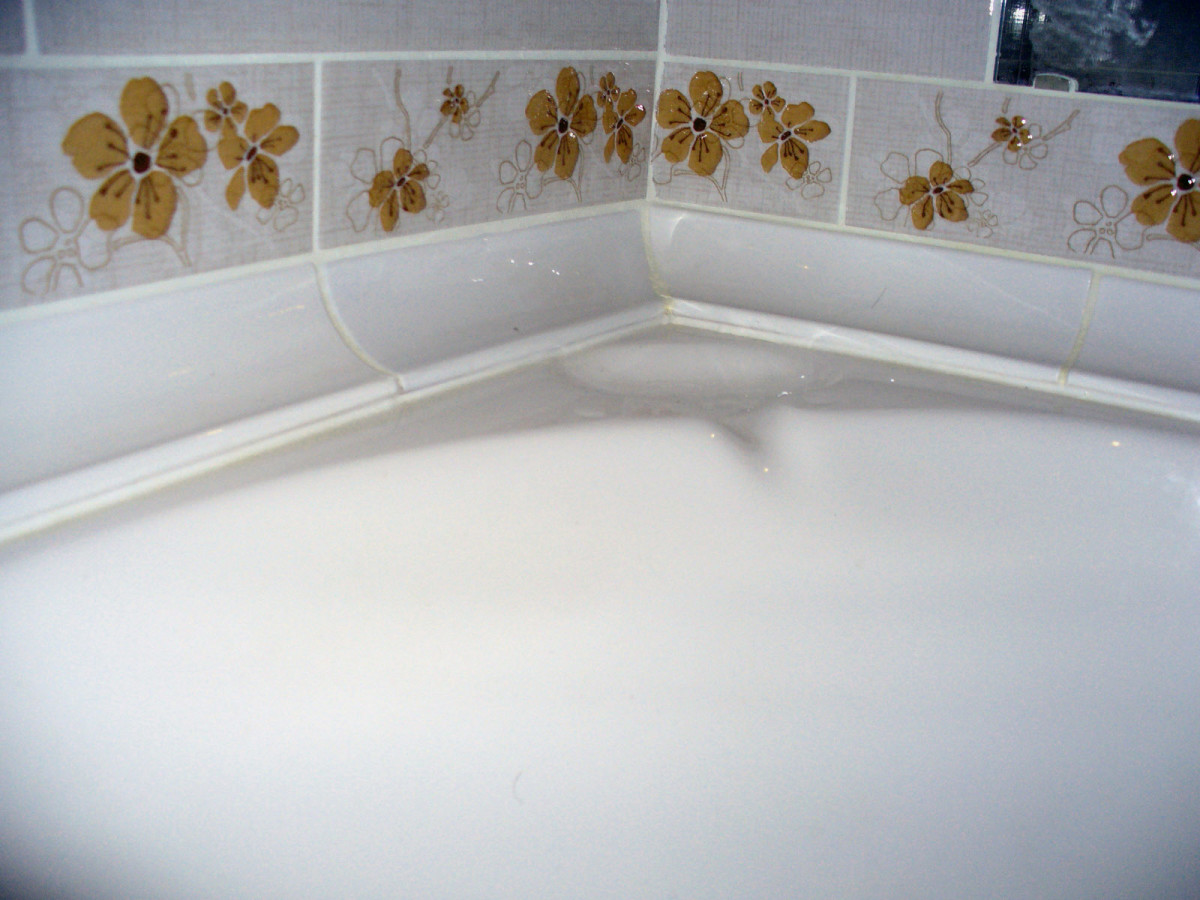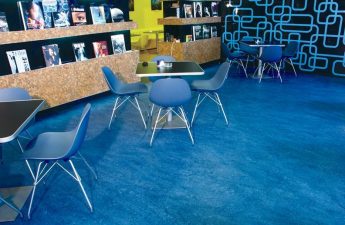In this article, we will tell you in detail about suchdetails such as inserts, borders, panels, skirting boards, roses, corners and joints in ceramic tile collections It is rare to see an apartment whose interior is not decorated with ceramic tiles. Perhaps this is the most commonly used finishing material, which is chosen due to its durability, practicality and decorative effect. Most often, bathrooms, bathrooms, corridors and, of course, kitchens are decorated with tiles. But the seeming monotony of this material is deceptive: it is enough to use tiles of different tones, combine vertical stripes with horizontal ones - and the surface will sparkle, giving the strict lines of a standard room an originality. A decorative panel made of tiles with various elements and patterns perfectly zones the space around the sink, stove or above the working surface of the cutting table.
Tile-inserts, borders, roseons
The insert is a tile of the sameSize, which is basic, but only supplemented with a picture or texture. The type of the picture depends on the room for which the tile is intended: in the kitchen, images of fruits, vegetables and small houses will be most appropriate, in the bathroom there are fish, seashells and other seashell prints. Embossed inserts can complement the floor pattern, and smooth ones can be used for wall masonry. Sometimes they can be mounted a small hook or shelf - this solution will be relevant for the kitchen or bathroom. Place inserts point by point or by group - depending on the design plan. 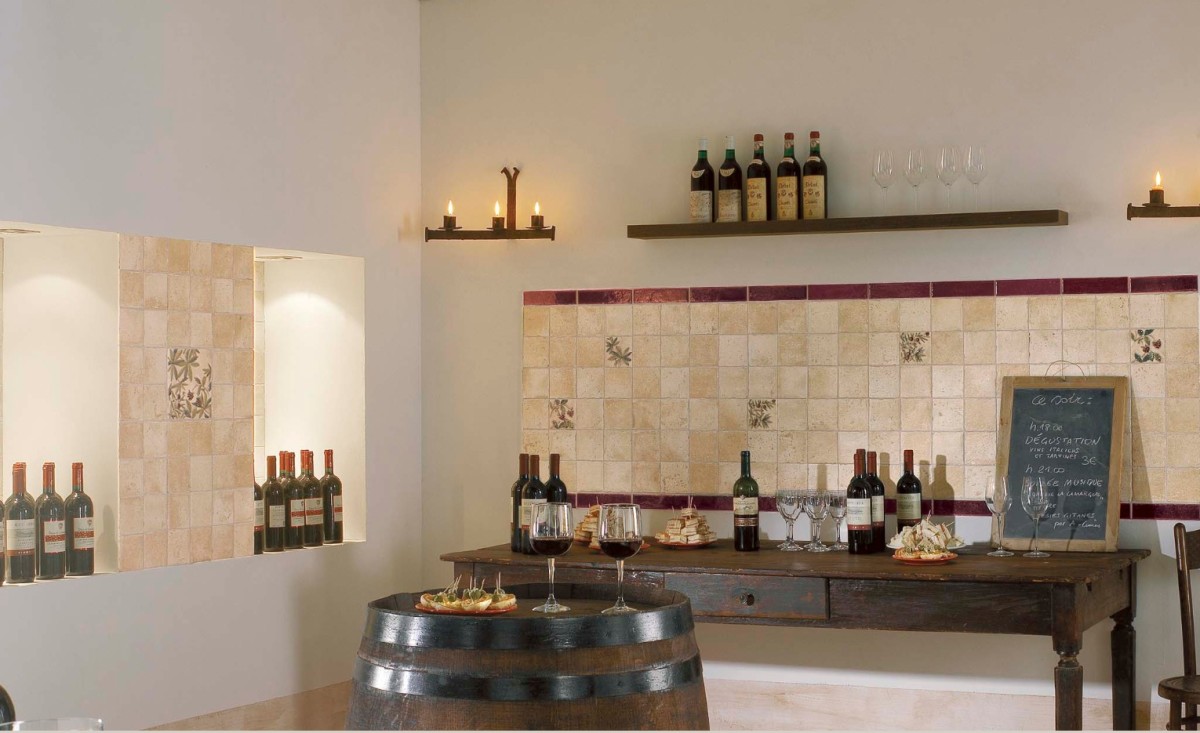
The border joins, divides or emphasizes
Border, or frieze, hangs the composition. It has a rectangular shape and is located, as a rule, on top of the main panel. But you can put it down or in the middle - it's a matter of taste and fantasy. You can also lay the frieze vertically - then it visually separates one thematic or color group from the other within a single panel. 
 The pencil border complements the frieze or contrastswith him. Used when laying floor tiles, it usually accentuates the center or accentuates the overall background. Craftsmen often use two types of background tiles, while inside the perimeter they make a diagonal laying, and outside the perimeter they are mounted in the usual way, which creates the effect of a "ceramic carpet". Tiles of different sizes are used for panel-freesize, and by alternating them in one order or another, they create the effect of overflowing a strict decor into a chaotically blurred one. Floor tiles are also often complemented by an insert - a rose, which is a round or oval panel built into the main composition.
The pencil border complements the frieze or contrastswith him. Used when laying floor tiles, it usually accentuates the center or accentuates the overall background. Craftsmen often use two types of background tiles, while inside the perimeter they make a diagonal laying, and outside the perimeter they are mounted in the usual way, which creates the effect of a "ceramic carpet". Tiles of different sizes are used for panel-freesize, and by alternating them in one order or another, they create the effect of overflowing a strict decor into a chaotically blurred one. Floor tiles are also often complemented by an insert - a rose, which is a round or oval panel built into the main composition. 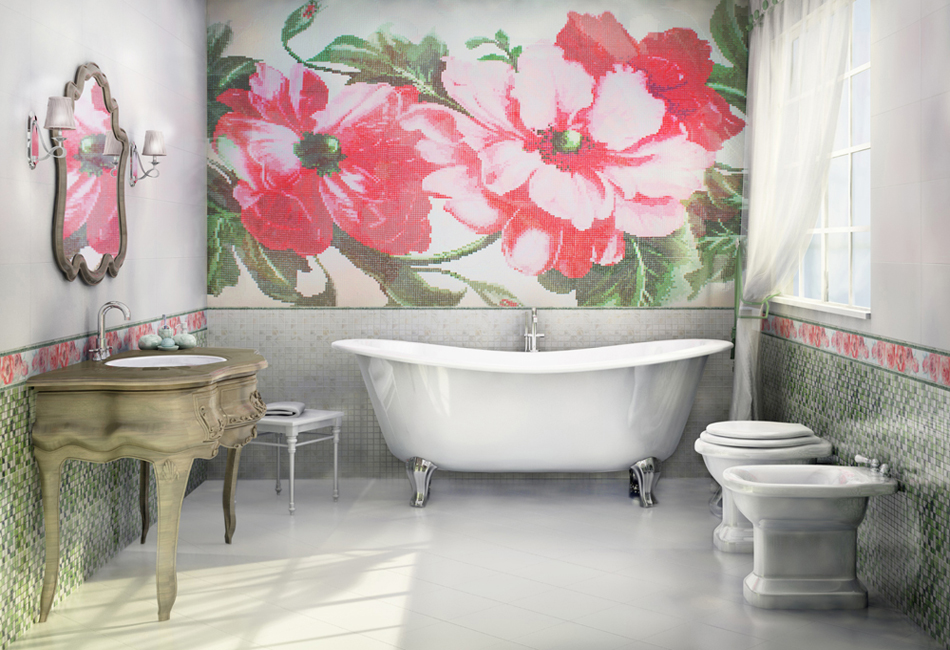
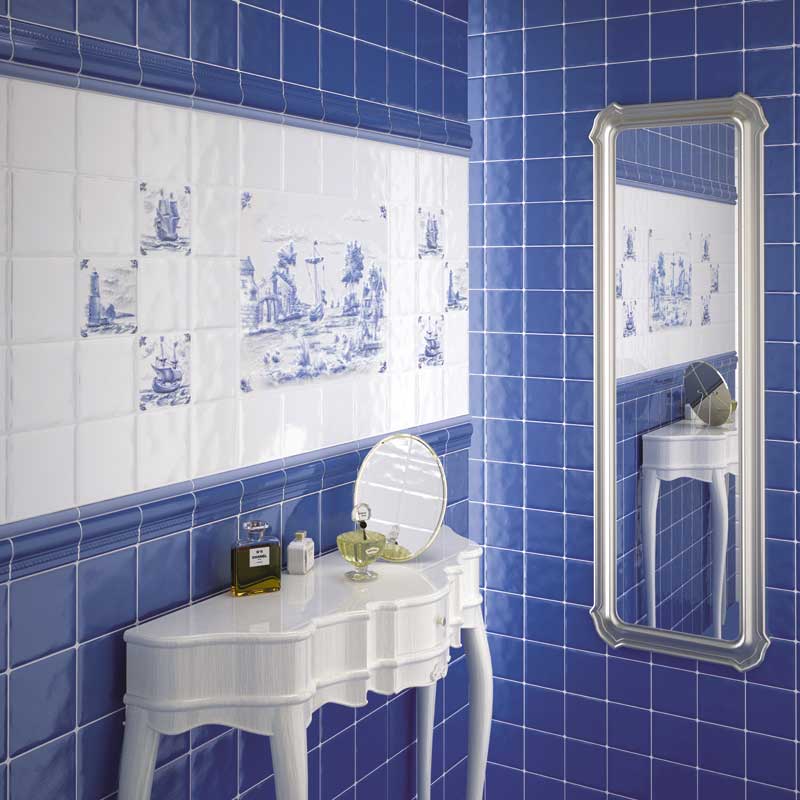
Plinth aligns and decorates the panel
In wall tiled panels, the skirting board performsdecorative function (while its shape, color and even texture can be anything). He can also separate parts of the panel, visually lengthen the walls. But keep in mind that it is better not to cut the plinth into parts: the more prominent it is, the greater the threat of chips appearing on it during mechanical stress. Semicircular or embossed elements are suitable for decorating corners. And any of the above elements is quite suitable for framing a mirror in a bathroom. Provided that this mirror is not round. 